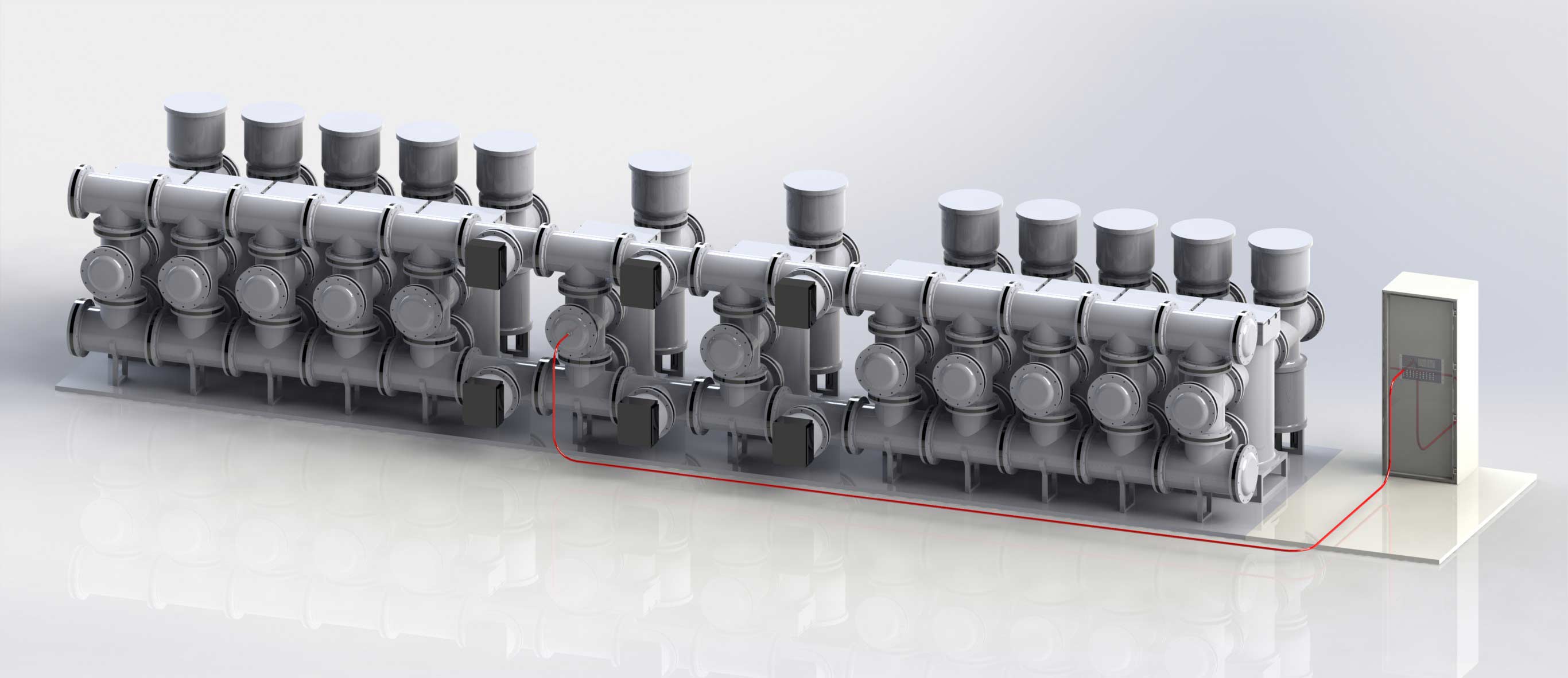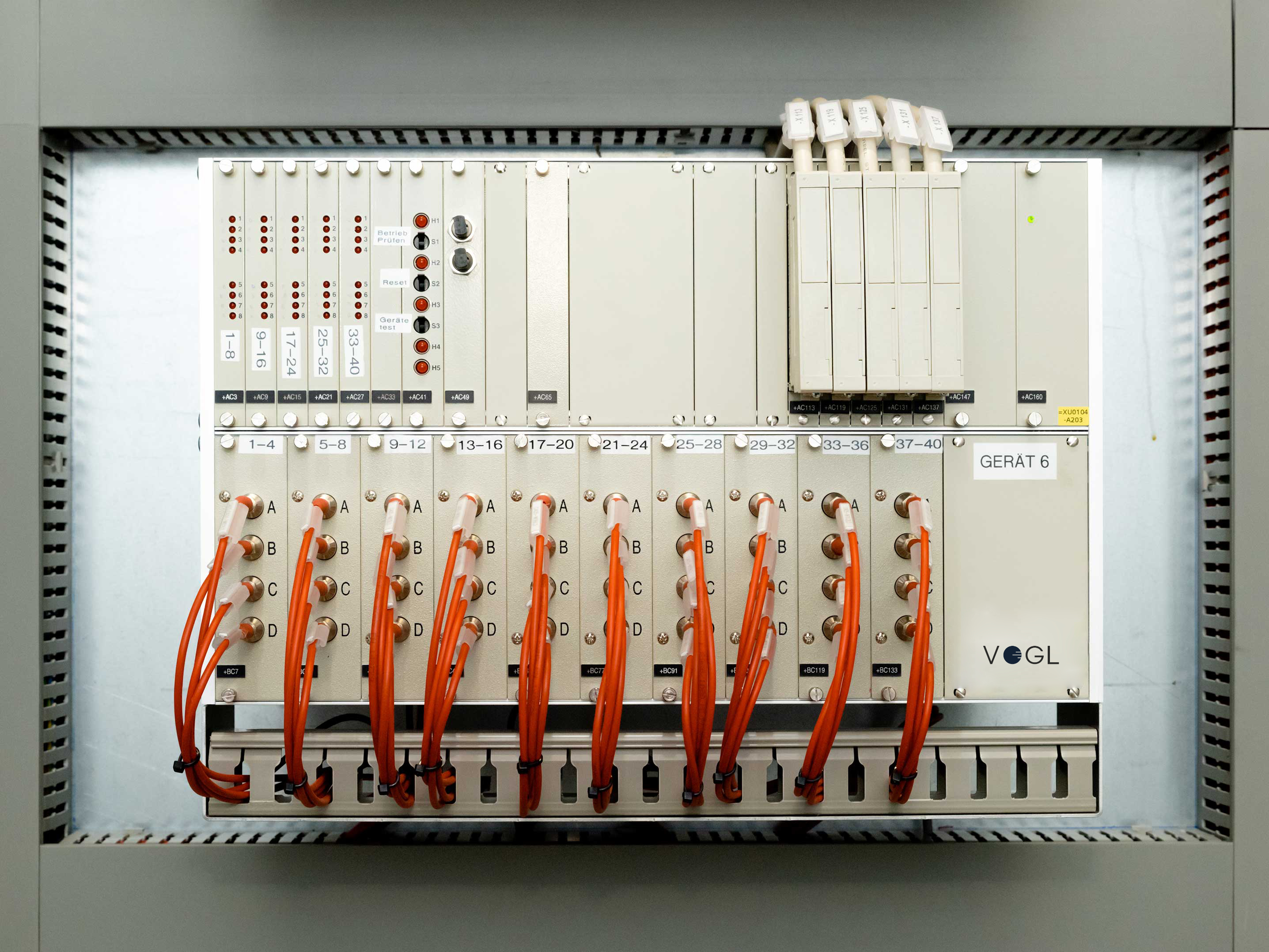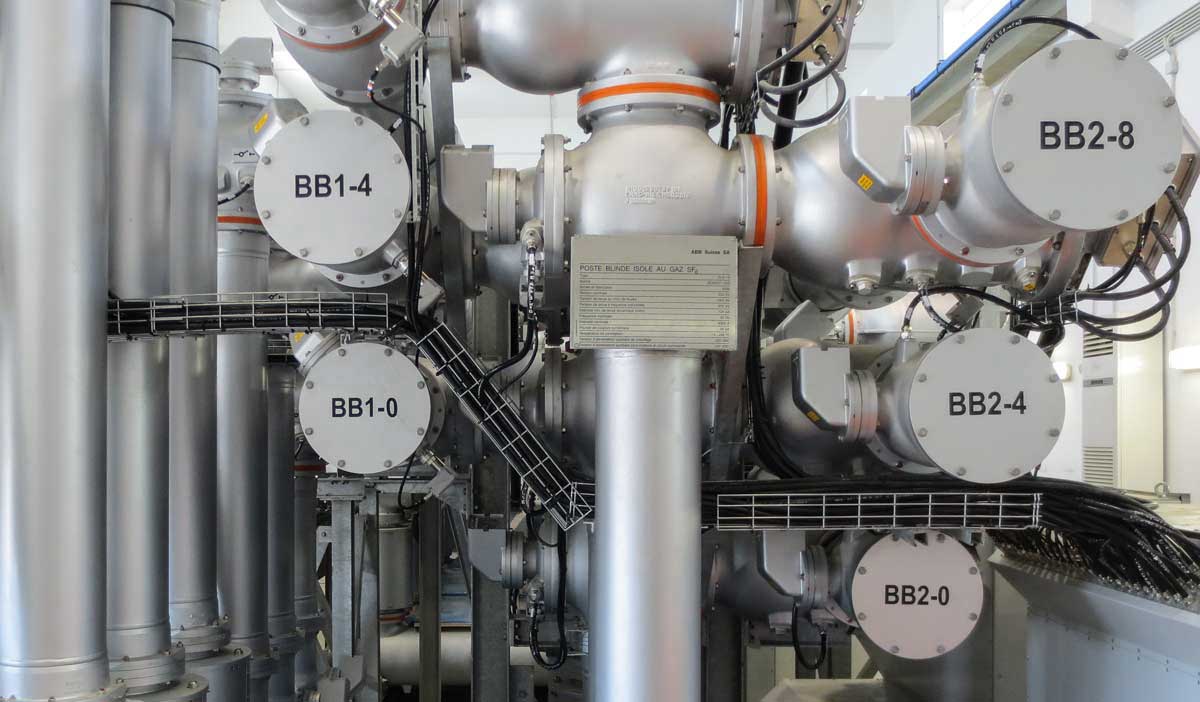Secure your grid against outages and stay informed regarding the condition of your switchgear at all times.
LiBo – detects and localizes arcs in gas-insulated switchgears
Arc detection based on optical sensors
The main task of the optoelectronic arc detection system (LiBo) is to locate arc faults in gas-insulated switchgear safely and accurately. In the event of an arc fault, only short interruptions to operation occur and the availability of the switchgear is increased.
For this purpose, light sensors monitor the individual gas compartments. If an arc occurs, the signal is transmitted via a fiber-optic cable to the electronic unit, which triggers a corresponding error message in the substation itself and in the SCADA system. As a result, affected gas compartments can be isolated immediately before significant damage can occur. With the precise localization of the fault down to a single gas compartment, appropriate measures can be taken immediately to restore uninterrupted operation. Any consequential damage during the switching process can be prevented by knowing the exact location of the defective gas compartments.
- Testing / Commissioning
- Monitoring
- Maintenance / Repair

Advantages of the optical monitoring of gas-insulated switchgear
| Exact localization of the arc down to the individual gas compartment |
| Avoidance of dangerous switching operations (e.g.: disconnector switching to a faulty gas compartment (may damage the disconnector) ) |
| Reliable detection of flashovers in lightning impulse tests and HV testing |
| Early detection of defects during HV test |
| Fast recommissioning in the event of failure |
| Very low maintenance requirements |
| Compatible with any common switchgear |
| Fast response time due to optical signal transmission and processing |
| Short downtimes of the GIS in case of an arc fault due to precise localization of the faulty gas compartment |
| No interference by electromagnetic sources (e.g. UHF signals, cell phones, switching devices, etc.) |
| Additional gas compartments can be installed at any time |
| Possibility of retrofitting existing GIS |




